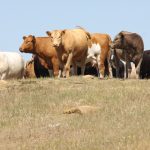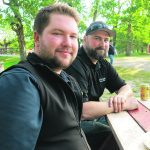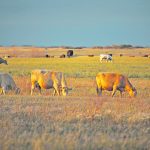Beagles and Labrador retrievers are used in North American airports to help catch banned food that could spread disease
Beagles are employed in U.S. and Canadian airport passenger areas to catch food products that can’t be imported. Labrador retrievers are often used in cargo areas because they’re bigger and can get on top of bulky containers. Livestock Management
Livestock Management

Cow-calf sector needs to be good antimicrobial steward
The use of antimicrobials in animal agriculture is an area of concern for human health as well. Antimicrobial use in agriculture might impact the effectiveness of antimicrobials in human medicine.

Company secures USDA approval for its cultivated meat
It’s the second company in the United States to receive regulatory approval for the label on its cell-cultivated chicken
Cultivated meat is made from a small sample of livestock cells collected from living animals, which are then fed a nutrient mix and grown inside steel vats.
Taiwan lifts more restrictions on beef
While Taiwan is not a large export market, with Canadian beef exports valued at a little less than $14 million, it is being seen as an opportunity to build greater trading ability.

Dryness gets serious in cattle country
CCA president Nathan Phinney said most cattle in Canada are in Alberta and Saskatchewan “where it’s the driest and we’re used to dealing with some of these conditions, but it’s been back to back to back… so we’ve had to do a slight reduction in cow numbers, and feed inventories have dwindled down over the last couple of years of dryness, so it’s having a major effect with the surplus of feed available.”

Young producers tap into mentorship
The Canadian Cattle Young Leaders program pairs 16 people ages 18 to 35 with an industry leader in their area of interest
James Kinley was a participant in the Canadian Cattle Young Leaders Spring Forum, which was recently held in the Calgary area. The three-day event included tours ranging from cow-calf farms and ranches to feedlots and a processing facility, along with networking events and learning sessions.
Irish cattle producers return to the mountain
Farmers in the Burren employ a system called winterage, where cattle graze the windswept, rain-soaked mountains of west County Clare from autumn until spring. The cattle are brought back to the valleys and farmsteads for the rest of the year, before once again moving to their mountain winter pastures (called winterages by locals) as the days shorten and temperatures cool.

Shearers provide vital service for sheep sector
A younger generation is joining the small group of professional shearers who ply their trade across Western Canada
Wrestling a bleating mass of dirty wool weighing more than 200 pounds, flipping it onto its back or side, then wielding an electric shearer — that’s the normal routine for a sheep shearer. “It’s super physical,” said Bethan Lewis, a young shearer from Alexander, Man. All sheep should be shorn once a year to keep […] Read more
Watch cows for pneumonia during wildfire smoke season
Our goal is to help keep your cows alive, or at least salvageable for slaughter, yet statistics show that pneumonia is the second highest cause of death next to digestive disorders in mature cows. It’s a condition worth paying attention to.

Sustainability accounting worries cattle sector
Tammy Nemeth said the “unique circumstances of western Canadian livestock producers” weren’t addressed at all during International Sustainability Standards Board discussions.



 Livestock Management
Livestock Management


